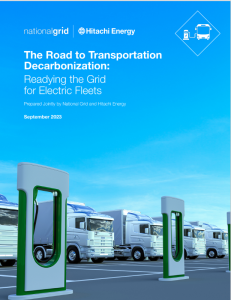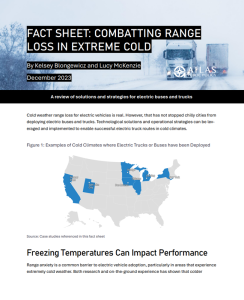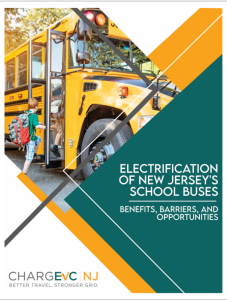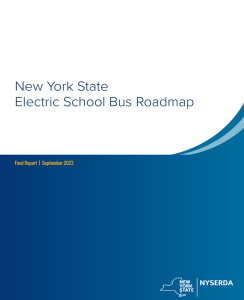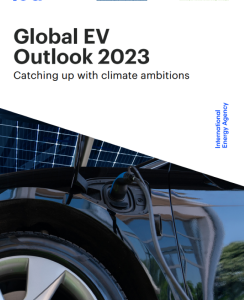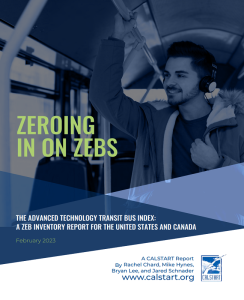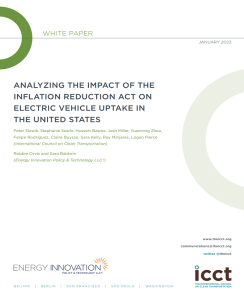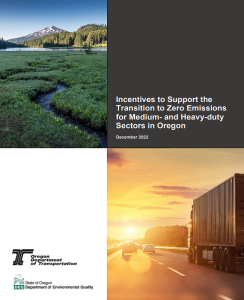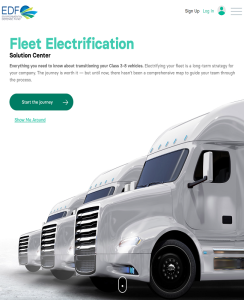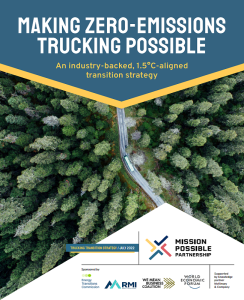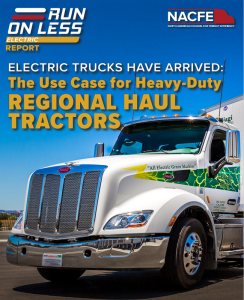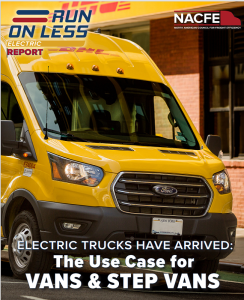We’ve assembled a comprehensive library of web-related resources related to the EV market, including reports, websites, and tools. New content is constantly hitting the web. To add a resource, simply fill out this form and we’ll add it to the library!
Filter by Date
Filter Selections:
January 2024
The study leads to insights and recommendations to help utilities, policymakers, and the transportation industry decarbonize fleet vehicles.
January 2024
Cold weather range loss for electric vehicles is real. However, that has not stopped chilly cities from deploying electric buses and trucks. To counteract cold weather range loss, fleets have taken advantage of technological advances in electric trucks and buses and have employed mitigation and adaptation strategies. This fact sheet discuses on-the-ground success of pre-heating the interior and battery, strategic planning and adaptation, more efficient heating technology, and longer ranges with newer vehicles.
December 2023
Atlas Public Policy assessed the current and planned production capacity for class 4-8 heavy-duty zero-emission vehicles in the United States based on publicly available information from vehicle manufacturers and news sources. The report discusses manufacturers plans to increase manufacturing capacity for heavy-duty zero-emission vehicles through building new facilities, expanding existing facilities, and the recalibration of production at facilities that are capable of producing both internal combustion and zero-emission vehicles side-by-side.
November 2023
This study explores the current landscape of school buses in New Jersey, estimates the economic and environmental impacts that come with full school bus electrification, and identifies the most crucial barriers to school bus electrification in the State, identifying specific pathways to address those issues and recommendations to make adoption feasible.
September 2023
The New York State Electric School Bus Roadmap presents an overview of the key challenges, costs, funding mechanisms, and policy options involved in the effort to transition all school buses in New York State to zero-emission operation by 2035
May 2023
Policymakers, manufacturers, and end users have experimented with a number of policy tools to promote first clean and now primarily zero-emission vehicle adoption. An expanding number of states and regions have adopted a now well-proven policy tool to efficiently deploy zero-emission commercial vehicles—and now infrastructure—faster using an innovative and flexible point-of-sale incentive: the voucher incentive program (VIP).
May 2023
The electrification of medium- and heavy-duty vehicles (MHDVs) is gaining momentum
in the United States, and the major manufacturers in the country have made ambitious
commitments for the mass production of zero-emission vehicles (ZEVs) as early as
2030. State-level regulations such as California’s Advanced Clean Trucks (ACT) rule,
federal incentives in the Inflation Reduction Act, and the U.S. commitment to join the
Global Commercial Drive to Zero (aimed at 100% ZEV sales by 2040) are increasing
ZEV adoption in the MHDV sector. Electrifying transportation nationwide will require
the deployment of charging (for battery electric vehicles) and refueling (for hydrogen
vehicles) infrastructure, as well as the supporting electrical grid infrastructure. MHDV
fleet operators, electric utilities, and policymakers alike are uncertain as to where, how
much, and by what year charging and refueling infrastructure needs to be built, and
what upgrades to grid infrastructure are required to enable this deployment.
May 2023
Zero-Emission Trucks: The Facts provides a concise overview of the state of zero-emission freight vehicles in the U.S., including industry demand, supply, and benefits.
April 2023
Electric car markets are seeing exponential growth as sales exceeded 10 million in 2022. A total of 14% of all new cars sold were electric in 2022, up from around 9% in 2021 and less than 5% in 2020. Three markets dominated
global sales. China was the frontrunner once again, accounting for around 60% of global electric car sales. More than half of the electric cars on roads worldwide are
now in China and the country has already exceeded its 2025 target for new energy vehicle sales. In Europe, the second largest market, electric car sales increased by over 15% in 2022, meaning that more than one in every five cars sold was electric. Electric car sales in the United States – the third largest market –increased 55% in 2022,
reaching a sales share of 8%.
February 2023
This report describes each of the many technologies that exist in the messy middle and for the zero-emissions future. It is intended to provide a framework for fleets, manufacturers and others to navigate this exciting, albeit messy middle.
February 2023
This report provides an updated inventory of adopted zero-emission buses (ZEBs)—defined as Class 3 and above battery-electric or fuel cell electric transit buses—that have been funded, ordered, and/or delivered within the United States and Canada, according to data collected through September 2022.
January 2023
This study conducted by the International Council of Clean Transportation assesses the future impact of the Inflation Reduction Act (IRA) on electrification rates for light-duty and heavy-duty vehicle sales in the United States through 2035.
December 2022
The Oregon Legislature tasked the Department of Environmental Quality and Department of Transportation to explore incentive programs that are needed to transition Oregon’s the medium- and heavy-duty fleet from gasoline or diesel to electricity or hydrogen. This report presents information gathered from existing incentive programs, best practices developed by Northeast States for Coordinated Air Use Management and input from numerous contributors including impacted industries and state and local governments.
November 2022
This Report summarizes major findings from data on the 149 retailers included in DGA’s Corporate Transportation Decarbonization Tracker, analyzes challenges to and opportunities for increased EV adoption, and highlights specific retailers’ bold commitments and innovative practices with regard to vehicle electrification, including initiatives related to EV chargers and medium- and heavy-duty electric vehicles (MHD EVs).
November 2022
A comprehensive guide for fleet electrification developed by the Environmental Defense Fund.
July 2022
Seventeen U.S. states, the District of Columbia, and the Canadian province of Quebec worked together through the Multi-State Zero Emission Vehicle (ZEV) Task Force, a coalition facilitated by NESCAUM, to produce a bold Action Plan for accelerating a transition to zero-emission trucks and buses.
July 2022
This report sets out a zero-emissions transition strategy for the heavy-duty trucking (HDT) sectors in the United States, Europe, China, and India. It identifies what needs to happen to enable this future between now and 2050.
May 2022
CALSTART's Delivery FLEET 1.0 software tool aids delivery companies in calculating the benefits of transitioning to zero-emission, first/last-mile delivery vehicles.
May 2022
The Run on Less – Electric demonstration focused on the heavy-duty regional haul tractors of the trucking industry.
April 2022
The Run on Less – Electric demonstration focused on the van and step van segment of the trucking industry.
March 2022
The Run on Less – Electric demonstration focused on the terminal tractor segment of the trucking industry
March 2022
New Study Highlights Viable Routes to Adopting Battery and Hydrogen Fuel Cell Electric Vehicles for America’s Clean Trucking Future
March 2022
Action plan to recommend policy options to support the rapid, equitable, and widespread electrification of MHD vehicles. With a focus on near term strategies
